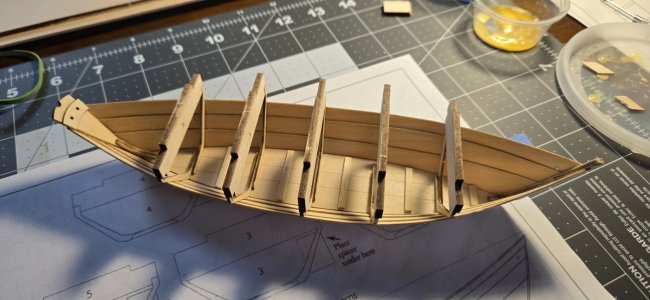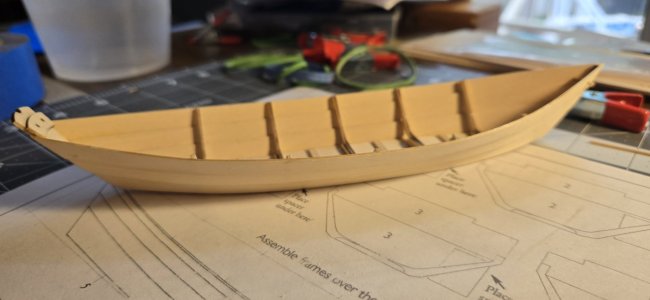A few years into my retirement I have decided to attempt wooden ship model building. My first foray is the Model Expo Lowell Grand Banks Dory.
I know my skill set would make the three-piece bottom fairly simple. However, as it is my first build I took the easy way out and chose the one-piece bottom.
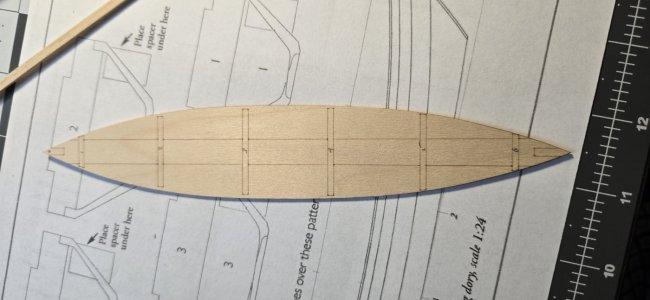
I measured and marked out the cleats, and chamfered the edges before cutting them, requiring only chamfering the ends when placing them.
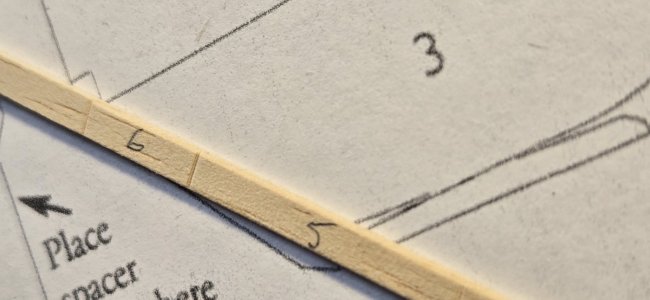
Following the guide I prepared and installed the stem and transom. Then set the bottom curve.
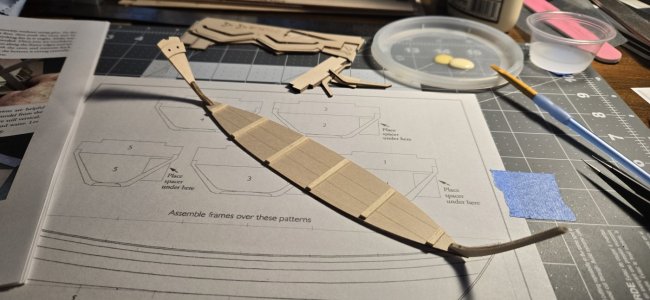
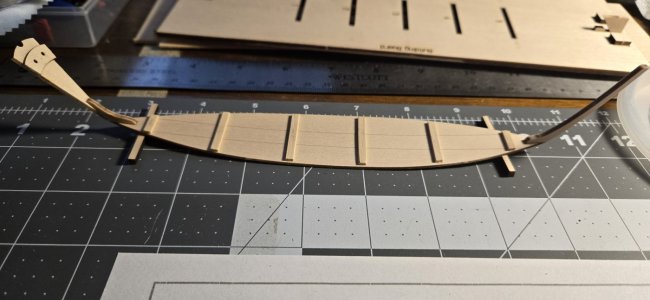
I encountered an issue (my own) with the frames. They assembled all right. Getting them into the jig, and having them set at 90 degrees was the first issue. After sanding the inside of the slots, where needed, I placed each from and support. I found I needed to file opposite top and bottom long edges to get the frames to align at 90 degrees.
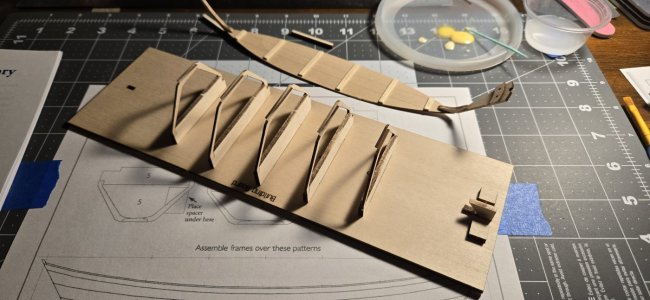
Now, my next issue with the frames. In a number of builds there were comments about the fragility of some wood pieces due to the angle of the grain to the piece. I found that out the hard way. Attempting to be as careful and gentle as possible I had two frames break from the rubber band pressure. For one frame the broken piece landed in the middle of the workspace. The second broken pieced disappeared into the ether. Using the template I was able to manufacture the missing piece. Unfortunately, I miscalculated and the piece was a tad short. When the bottom was laid out over the frames there was a gap of a few millimeters. I filled the gap with a piece of scrap from a piece sheet that was the right thickness. Glued that in place, and sanded to shape. What I learned from this particular occurrence is in the future, put the template on a piece of carboard or dense foam and use pins to wedge the pieces in place while mapping out the 'missing' section.
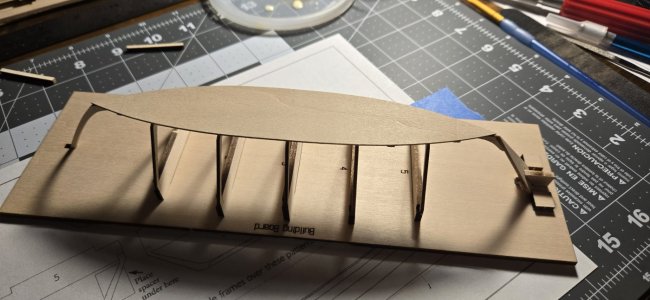
Forming and attaching the garboard planks presented a minor problem. While soaking the port plank I used a metal weight to hold under the water. Oops. The metal left a stain, Hoping paint will correct that error. While working the starboard plank, sanding down to the laser printed sanding mark, the edge split and separated along much of the the mark. Apparently I put too much lateral pressure on the edge while cleaning them up. using diluted PVA glue I filled the gap and clamped the piece in place.
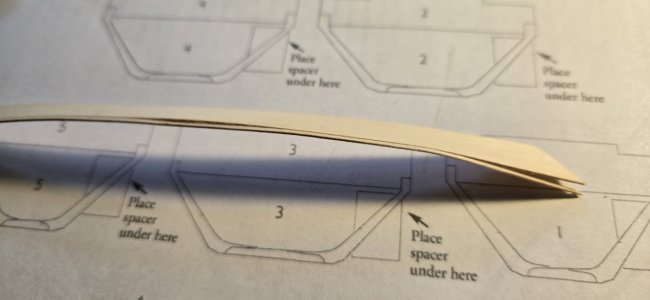
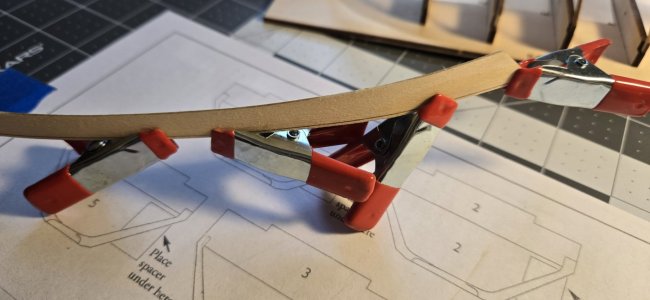
So, to this point I have the port garboard plank glued in place, and the starboard garboard plank bent. While bending the starboard plank the plank split at the guide line, again. Re-glued and clamped. Will attempt to glue into place later today.
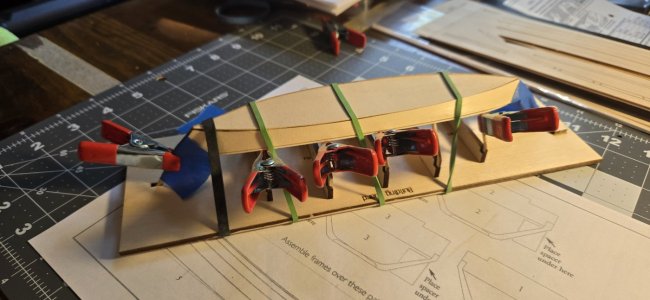
Has been quite enjoyable, a real test of patience (waiting for the next step).
Cheers
I know my skill set would make the three-piece bottom fairly simple. However, as it is my first build I took the easy way out and chose the one-piece bottom.

I measured and marked out the cleats, and chamfered the edges before cutting them, requiring only chamfering the ends when placing them.

Following the guide I prepared and installed the stem and transom. Then set the bottom curve.


I encountered an issue (my own) with the frames. They assembled all right. Getting them into the jig, and having them set at 90 degrees was the first issue. After sanding the inside of the slots, where needed, I placed each from and support. I found I needed to file opposite top and bottom long edges to get the frames to align at 90 degrees.

Now, my next issue with the frames. In a number of builds there were comments about the fragility of some wood pieces due to the angle of the grain to the piece. I found that out the hard way. Attempting to be as careful and gentle as possible I had two frames break from the rubber band pressure. For one frame the broken piece landed in the middle of the workspace. The second broken pieced disappeared into the ether. Using the template I was able to manufacture the missing piece. Unfortunately, I miscalculated and the piece was a tad short. When the bottom was laid out over the frames there was a gap of a few millimeters. I filled the gap with a piece of scrap from a piece sheet that was the right thickness. Glued that in place, and sanded to shape. What I learned from this particular occurrence is in the future, put the template on a piece of carboard or dense foam and use pins to wedge the pieces in place while mapping out the 'missing' section.

Forming and attaching the garboard planks presented a minor problem. While soaking the port plank I used a metal weight to hold under the water. Oops. The metal left a stain, Hoping paint will correct that error. While working the starboard plank, sanding down to the laser printed sanding mark, the edge split and separated along much of the the mark. Apparently I put too much lateral pressure on the edge while cleaning them up. using diluted PVA glue I filled the gap and clamped the piece in place.


So, to this point I have the port garboard plank glued in place, and the starboard garboard plank bent. While bending the starboard plank the plank split at the guide line, again. Re-glued and clamped. Will attempt to glue into place later today.

Has been quite enjoyable, a real test of patience (waiting for the next step).
Cheers


